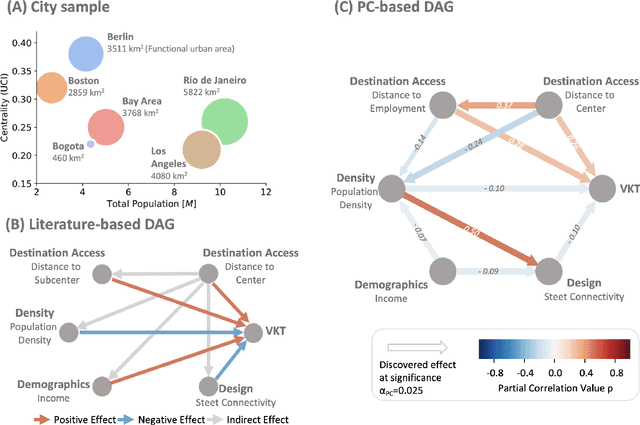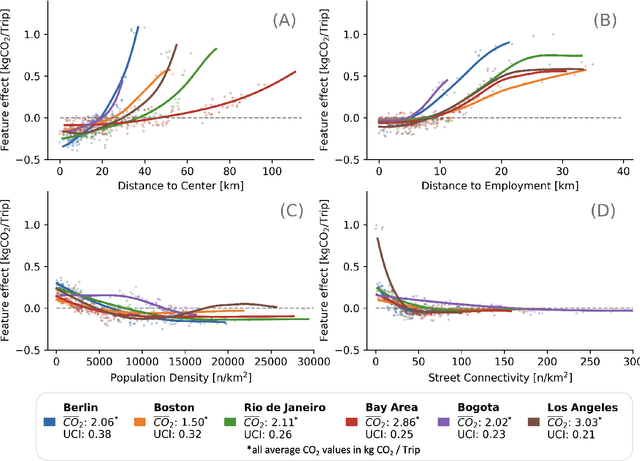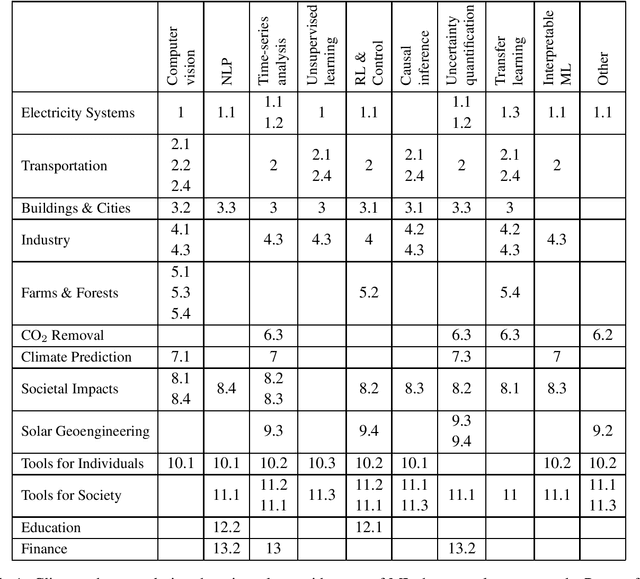Felix Creutzig
The built environment and induced transport CO2 emissions: A double machine learning approach to account for residential self-selection
Dec 07, 2023



Abstract:Understanding why travel behavior differs between residents of urban centers and suburbs is key to sustainable urban planning. Especially in light of rapid urban growth, identifying housing locations that minimize travel demand and induced CO2 emissions is crucial to mitigate climate change. While the built environment plays an important role, the precise impact on travel behavior is obfuscated by residential self-selection. To address this issue, we propose a double machine learning approach to obtain unbiased, spatially-explicit estimates of the effect of the built environment on travel-related CO2 emissions for each neighborhood by controlling for residential self-selection. We examine how socio-demographics and travel-related attitudes moderate the effect and how it decomposes across the 5Ds of the built environment. Based on a case study for Berlin and the travel diaries of 32,000 residents, we find that the built environment causes household travel-related CO2 emissions to differ by a factor of almost two between central and suburban neighborhoods in Berlin. To highlight the practical importance for urban climate mitigation, we evaluate current plans for 64,000 new residential units in terms of total induced transport CO2 emissions. Our findings underscore the significance of spatially differentiated compact development to decarbonize the transport sector.
A Causal Discovery Approach To Learn How Urban Form Shapes Sustainable Mobility Across Continents
Aug 31, 2023



Abstract:Global sustainability requires low-carbon urban transport systems, shaped by adequate infrastructure, deployment of low-carbon transport modes and shifts in travel behavior. To adequately implement alterations in infrastructure, it's essential to grasp the location-specific cause-and-effect mechanisms that the constructed environment has on travel. Yet, current research falls short in representing causal relationships between the 6D urban form variables and travel, generalizing across different regions, and modeling urban form effects at high spatial resolution. Here, we address all three gaps by utilizing a causal discovery and an explainable machine learning framework to detect urban form effects on intra-city travel based on high-resolution mobility data of six cities across three continents. We show that both distance to city center, demographics and density indirectly affect other urban form features. By considering the causal relationships, we find that location-specific influences align across cities, yet vary in magnitude. In addition, the spread of the city and the coverage of jobs across the city are the strongest determinants of travel-related emissions, highlighting the benefits of compact development and associated benefits. Differences in urban form effects across the cities call for a more holistic definition of 6D measures. Our work is a starting point for location-specific analysis of urban form effects on mobility behavior using causal discovery approaches, which is highly relevant for city planners and municipalities across continents.
Tackling Climate Change with Machine Learning
Jun 10, 2019
Abstract:Climate change is one of the greatest challenges facing humanity, and we, as machine learning experts, may wonder how we can help. Here we describe how machine learning can be a powerful tool in reducing greenhouse gas emissions and helping society adapt to a changing climate. From smart grids to disaster management, we identify high impact problems where existing gaps can be filled by machine learning, in collaboration with other fields. Our recommendations encompass exciting research questions as well as promising business opportunities. We call on the machine learning community to join the global effort against climate change.
 Add to Chrome
Add to Chrome Add to Firefox
Add to Firefox Add to Edge
Add to Edge